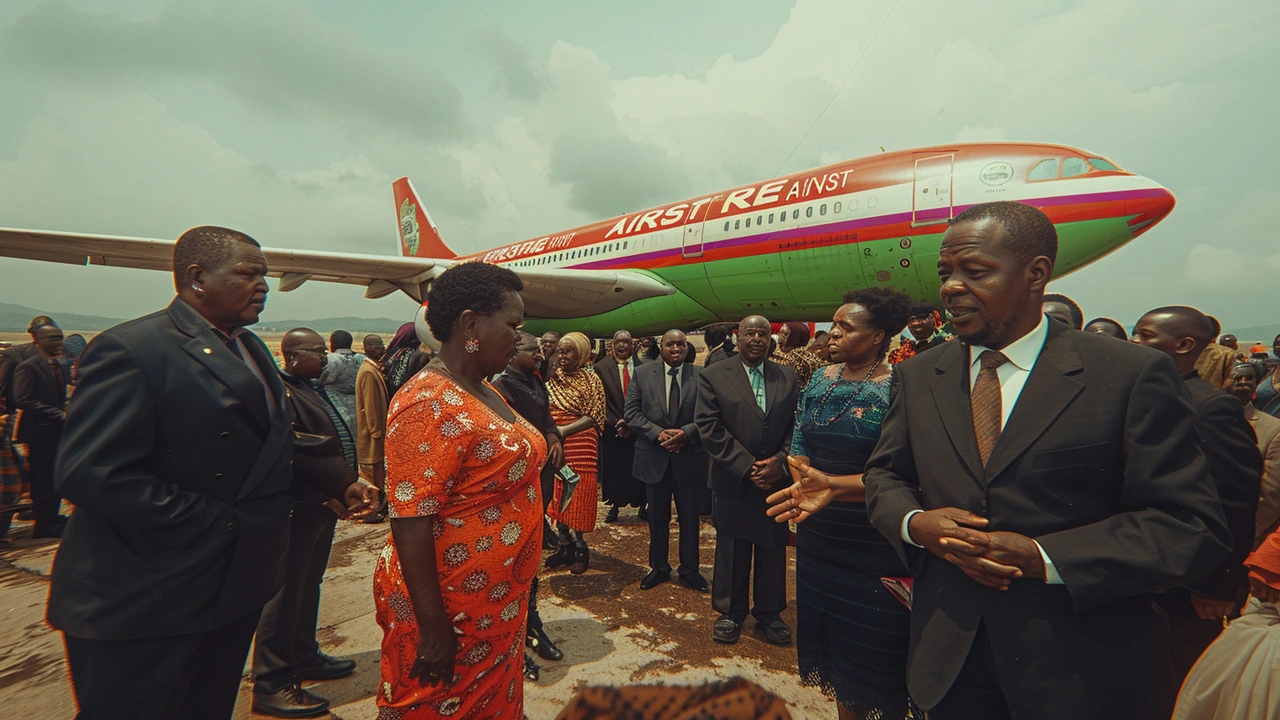- South Africa Sets Stiff 353-Run Target for Pakistan in Tri-Series Showdown Feb 12, 2025
- Pakistan Triumphs Over Australia in Thrilling ODI Series Decider Nov 10, 2024
- Dmitry Bivol Pursues Artur Beterbiev Rematch After Narrow Defeat Oct 13, 2024
- NYSC DG Unveils New N77,000 Corps Member Monthly Stipend in a Bid to Boost Youth Empowerment Feb 1, 2025
- Manchester United Nears Blockbuster Signing of Matthijs De Ligt from Bayern Munich Jul 4, 2024
Missing Plane: Clear Steps to Take Right Now
If someone you care about is on a flight that’s reported missing, you feel helpless. Start with simple, concrete steps. They help you stay in control and get the right information fast.
First, confirm the flight number, departure and arrival airports, and scheduled time. Call the airline’s emergency or family assistance line — not a hotline from social media. Airlines can confirm passenger lists, last known communications, and the official response team handling the incident.
What families should do first
1) Contact the airline and ask for the family assistance unit. They should give you an official point of contact and set times for updates.
2) Gather documents: the passenger’s booking reference, passport number, seat number, and a recent photo. Keep digital copies and hard copies ready for authorities.
3) Register with the airline’s family support and attend briefings. Airlines and authorities often hold regular briefings for families — go to them and bring a trusted friend or relative for support.
4) Limit sharing on social media. Don’t spread unverified details or theory. False leads waste time and can harm official search efforts.
How searches and tracking usually work
Air traffic control logs the last radar contact and radio calls. Modern planes also send automatic data (ACARS) and ADS-B signals that sites like Flightradar24 and FlightAware can display — but public trackers are not official sources. Search and rescue (SAR) teams use radar traces, satellite pings, last known altitude, and weather data to focus the search area.
Authorities may deploy ships, aircraft, and satellites. If the plane is over water, underwater search teams look for emergency locator transmitter (ELT) signals and debris. These operations can take time; setbacks are common. Ask the lead authority for a timeline and who to contact for updates.
Know which agencies might be involved: the airline, the country’s civil aviation authority, the national search and rescue agency, and accident investigation bodies like NTSB, AAIB, BEA or local equivalents. The lead agency will decide when public briefings happen.
Use official sources only: airline press releases, the civil aviation authority, and the country’s emergency services. Flight tracking apps are good for context but not for final answers.
Practical tips while you wait: keep your phone charged, record every call and message, and write down the names and badge numbers of officials you speak with. Ask about consular help if the passenger is abroad. Get someone to handle media requests if news outlets call — a single family spokesperson keeps messages consistent.
Mental and practical support matters. Reach out to local support groups, a counselor, or a trusted community leader. Small steps — eating, sleeping, and delegating tasks — make a difference during long waits.
You can’t control the search, but you can control how you respond. Focus on official channels, document everything, and accept support. Keep asking the right questions and demand clear updates from the agencies leading the search.
Malawi's Urgent Search for Missing Military Plane with Vice President: International Support Pouring In
- Katlego Sean Mahaye
- Jun 12, 2024
A military plane carrying Malawi’s Vice President Saulos Chilima, former first lady Shanil Dzimbiri, and seven others vanished after being redirected due to bad weather. An extensive search is underway, with support from international allies, while the nation hopes for the safe return of its leaders.
